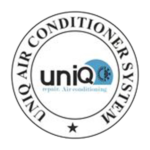AC Blower Fan Replacement: A Comprehensive Guide
Your air conditioning system relies on various components to deliver cool and comfortable air throughout your home, and one of the most critical parts is the blower fan. The blower fan is responsible for circulating conditioned air from the HVAC unit into your living spaces. Over time, wear and tear can cause the blower fan to malfunction or become less efficient, leading to reduced cooling capacity and discomfort. In this comprehensive guide, we will explore AC blower fan replacement, including the signs that indicate the need for replacement, the steps involved in the replacement process, and tips for a successful replacement.
Chapter 1: Signs that Your AC Blower Fan Needs Replacement
Before delving into the replacement process, it’s crucial to recognize the signs that indicate your AC blower fan may be in need of replacement. Identifying these symptoms early can prevent further damage to your HVAC system and ensure your home remains cool and comfortable.
1.1 Reduced Airflow
One of the most common signs of a failing blower fan is reduced airflow. If you notice weak or inconsistent airflow from your vents, it may be due to a malfunctioning fan.
1.2 Strange Noises
Unusual noises coming from your HVAC system, such as rattling, squeaking, or banging sounds, can indicate issues with the blower fan or its motor.
1.3 Inefficient Cooling
If your AC system is struggling to cool your home adequately or maintain a consistent temperature, a malfunctioning blower fan may be to blame.
1.4 High Energy Bills
A blower fan that is working harder than usual to distribute air can result in increased energy consumption and higher utility bills.
1.5 Uneven Cooling
Uneven cooling throughout your home, with some rooms feeling too warm or too cold, can be a sign of blower fan problems.
1.6 Burning Odors
A burning or overheating odor coming from your vents can indicate motor or electrical issues within the blower fan.
Chapter 2: Steps for AC Blower Fan Replacement
Replacing the AC blower fan is a complex task that typically requires the skills and expertise of a professional HVAC technician. However, it’s beneficial to understand the general steps involved in the process:
2.1 Turn Off Power
Safety is paramount when working with electrical components. Begin by turning off the power to your HVAC system at the circuit breaker.
2.2 Access the Blower Compartment
Open the access panel to the blower compartment, which is usually located within the HVAC unit. This may require removing screws or fasteners.
2.3 Disconnect Electrical Connections
Carefully disconnect the electrical connections to the blower fan motor, ensuring that wires are labeled for reconnection.
2.4 Remove the Blower Fan Assembly
Loosen and remove the screws or bolts securing the blower fan assembly in place. Gently slide out the assembly, taking care not to damage any surrounding components.
2.5 Replace the Blower Fan
Unscrew or detach the old blower fan from the assembly and replace it with a new one of the same specifications and size.
2.6 Reassemble the Unit
Reassemble the blower fan assembly, ensuring that it is properly aligned and securely fastened.
2.7 Reconnect Electrical Connections
Reconnect the electrical connections, referring to the labels to ensure correct wiring.
2.8 Restore Power
Turn the power back on at the circuit breaker to test the newly installed blower fan.
2.9 Test the System
Run your AC system and observe the airflow and cooling performance to ensure that the replacement fan is functioning correctly.
Chapter 3: Benefits of AC Blower Fan Replacement
Replacing a malfunctioning or inefficient AC blower fan offers numerous benefits, both in terms of comfort and efficiency:
3.1 Improved Cooling
A new blower fan enhances the distribution of conditioned air, leading to more effective cooling and a more comfortable indoor environment.
3.2 Energy Efficiency
A properly functioning blower fan consumes less energy, reducing your monthly utility bills and environmental impact.
3.3 Enhanced Air Quality
A new blower fan can help maintain good indoor air quality by effectively circulating and filtering the air.
3.4 Longer HVAC System Lifespan
Replacing a worn-out blower fan can extend the overall lifespan of your HVAC system, as it reduces strain on the system.
3.5 Consistent Temperature
A well-functioning blower fan ensures that each room in your home receives consistent airflow and temperature, eliminating hot or cold spots.
Chapter 4: Tips for a Successful AC Blower Fan Replacement
If you decide to replace your AC blower fan, consider these tips for a successful and hassle-free process:
4.1 Hire a Professional
While understanding the process is helpful, it’s crucial to hire a licensed HVAC technician with the expertise and tools to perform the replacement safely and accurately.
4.2 Choose the Right Fan
Ensure that the replacement blower fan is the correct size and specifications for your HVAC system. A mismatch can lead to inefficiency and problems down the road.
4.3 Regular Maintenance
To prevent premature wear and tear on your new blower fan, commit to regular HVAC maintenance. This includes cleaning or replacing air filters and scheduling professional inspections.
4.4 Ask for Recommendations
Consult with your HVAC technician for recommendations on high-quality blower fan brands and models to ensure a reliable replacement.
Chapter 5: Conclusion
The AC blower fan plays a vital role in maintaining the comfort and efficiency of your HVAC system. Recognizing the signs of a failing blower fan, understanding the replacement process, and considering the benefits of replacement are essential aspects of keeping your home cool and comfortable. When faced with a malfunctioning blower fan, it’s advisable to seek professional assistance to ensure a safe and effective replacement. By investing in a new blower fan and adhering to regular HVAC maintenance, you can enjoy improved cooling, enhanced energy efficiency, and a longer lifespan for your HVAC system.


 Please enter your name and phone number below, We will get back to you soon.
Please enter your name and phone number below, We will get back to you soon.